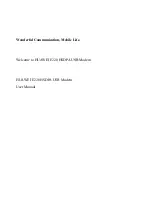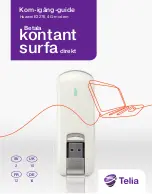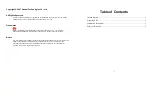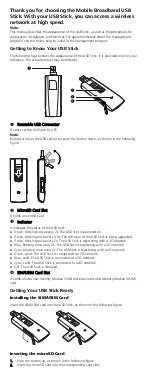
RFX144V24-S23 and RFX96V24-S23 Modem Designer’s Guide
7-2
1070
The hexadecimal numbers written into these RAM locations are scaled as follows:
Frequency number = 6.8267 x 8.192 x (desired frequency in Hz) for 9600 Hz sample rate, or
8.192 x (desired frequency in Hz) for 8000 Hz sample rate.
Power number = 18426 [10
(Po/20)
]
Where Po = output power in dBm with a 600 ohm load termination. If terminating with a series 600 ohm resistor into a 600
ohm load, add 6 dB to the output power before using the above equation.
These decimal numbers must be converted to hexadecimal form then stored in RAM (see RAM data write routine).
Hexadecimal numbers for DTMF generation are listed in Table 7-2 (a 9600 Hz sample rate is assumed). Power levels are
selected to give the desired output power for each tone (-1 dBm for the high frequency tone and -3 dBm for the low
frequency tone if terminated with a series 600
Ω
resistor into a 600
Ω
load) while compensating for modem filter
characteristics.
7.3 DETECTING ANSWER TONE
Frequency detector bit FR1 (08:5) can be used to detect a 2100 Hz answer tone when connection to the remote modem is
successful. Bit FR1 goes active (one) when energy above the turn-on threshold is present at 2100 Hz ±25 Hz. At the end of
the answer tone, FR1 returns to zero and data transmission can begin.
7.4 COMPLETE CALLING SEQUENCE
A complete calling sequence consists of several steps including modem configuration, telephone number selection, DTMF
transmission, and answer tone detection. A sample flow chart for implementing an auto-dialer in host software is illustrated in
Figure 7-1.
The auto-dialer routine may be entered at one of two points; either AUTO DIAL or REDIAL. When entering at AUTO DIAL,
the host prompts the user to enter a phone number, which is then stored in the phone number buffer. When entering at
REDIAL, the routine dials the number previously stored in the phone number buffer and does not issue a user prompt.
Interrupts not required during dialing are disabled to prevent errors in real time delays. Interrupt status is saved to allow
restoring these interrupts when dialing is complete. The current modem configuration is saved prior to selecting the DTMF
Transmit configuration, then restored at the completion of the auto-dialer routine to allow data transfer.
The commands for off-hook and request coupler cut through are typical of signals required by data access arrangements
that may be connected to the modem for switched network operation.
Since the number to be dialed varies in length depending on the requirements of various PBX equipment, domestic
telephone companies, and foreign PTTs, the number buffer must allow for numbers of different length. The method used in
Figure 7-1 to determine the end of valid bytes in the buffer is zero recognition. After the last digit is entered, the carriage
return must place a 00h (ASCII NUL character) in the buffer. All other bytes must be non-NUL ASCII characters. Only
numeric characters (ASCII 30 through 39) are printed and dialed. Non-numeric characters are tested for comma and NUL.
Comma causes a 2-second pause in dialing to allow for known delays in the telephone network or PBX. NUL ends the dialing
portion of the routine and begins the answer tone detection portion. All other characters are ignored.
The answer tone detection logic allows 30 seconds for 2100 Hz recognition. If answer tone is not recognized within this time
limit, the call is aborted. If answer tone is recognized, the routine jumps to the data handling software.
Summary of Contents for RFX144V24-S23
Page 197: ......
















































